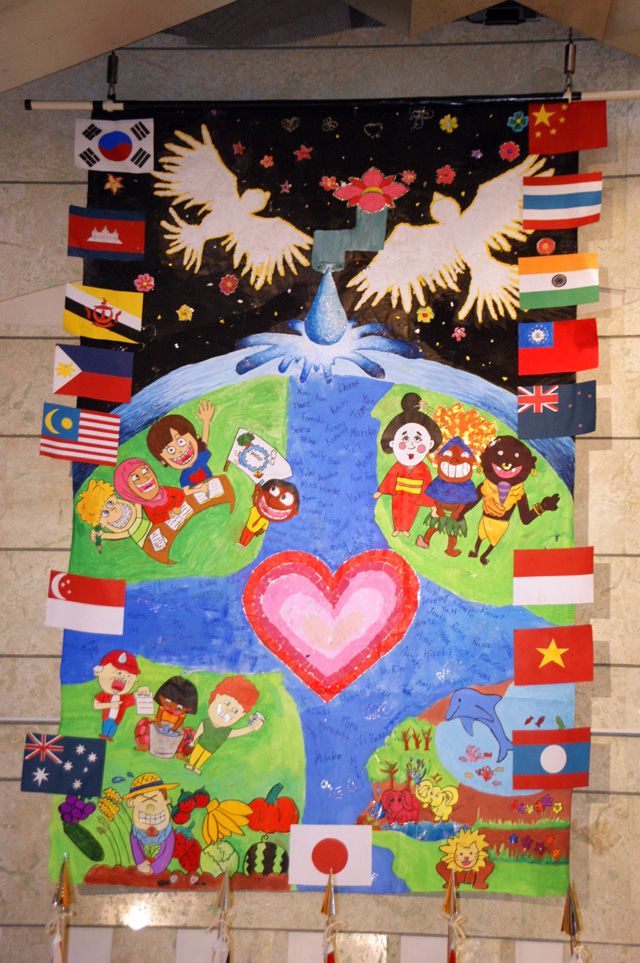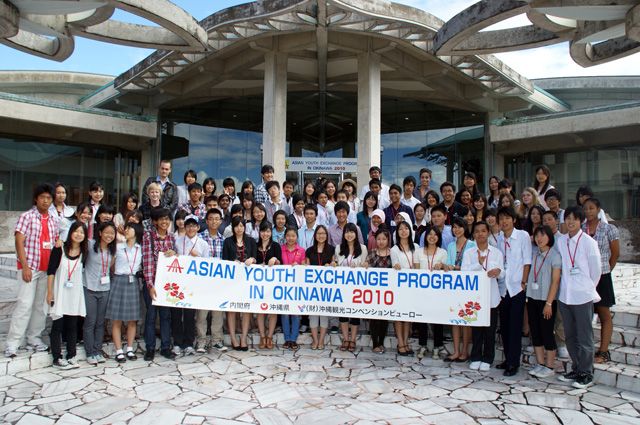August 23rd was the last day of this year’s ‘AYEPO 2010’ so I headed for Okinawa to attend the closing ceremony. The program started in 2008 (Ref.1) under the policy initiatives set by the Abe administration.
Again this year we had participants from all parts of Asia, 30 people aged 15 or 16 and 45 Japanese (1/3 of Japanese are female, as has been the case in 2008 and 2009). All of them are full of energy. During the 3 weeks’ sessions they saw and experienced so many things such as typhoon, Okinawa Heiwakinen (Peace) Memorial Park, home stay, diving, cleaning up the coastline, Okinawa Institute of Science and Technology (OIST), and Okinawa Churaumi Aquarium.
I joined the closing ceremony. We watched the video of how the participants spent the days in Okinawa, and the video of singing together ‘We are the World’; participants also focused on ‘water’ as last year for discussion, and wrote a poem ‘Kiseki (Miracle)’ pretending that they were seeing the world and ourselves in year 2030. Then after my evaluations and comments was the closing ceremony. It was a very nice day. How will those students be 10 to 20 years from now I wonder? I hope that starting from this 3 weeks’ experience at Okinawa, they will have built, then, wonderful human networks among and beyond each other.
More than 10 university students joined (I hear that more than 300 students at Ritsumeikan Asia Pacific University (APU) applied to participate in this program. The APU has been participating from the kick off of this program. What a wonderful reaction by the students!). Staffs, supporters, also all worked hard to create this wonderful 3 weeks’ experience. I would like to see people voluntarily and actively spread this kind of activities throughout Japan. To nurture future leaders, make big circle of friendships – this is the most important core concept of human resource development in the global era.





























